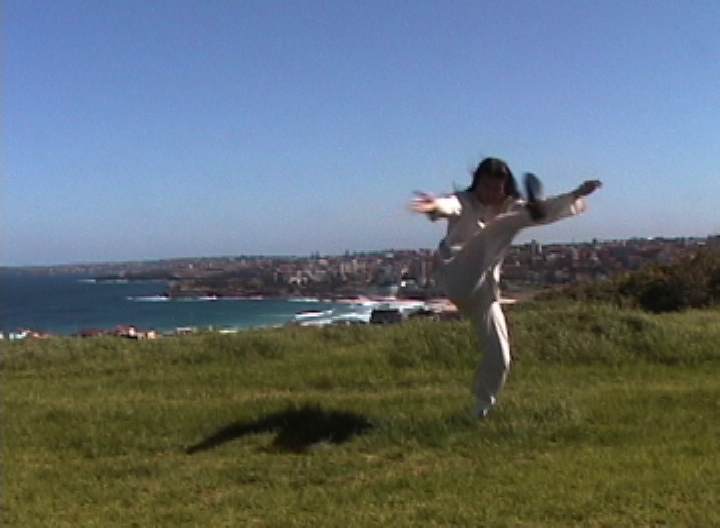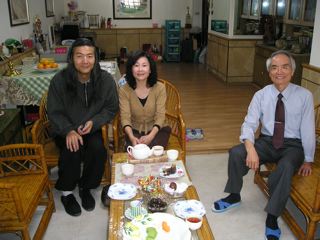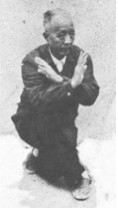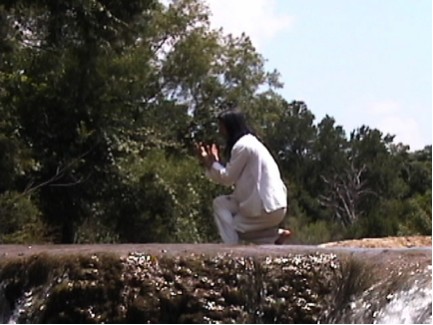Try Tai Chi- based on an interview with Danny Lai! Leap Magazine – Alberta Cancer Foundation
Tai Chi can help improve the balance and help reduce the risk of falling. In comparison to other exercises, including weight training, stretching, endurance training, and balance training, Tai Chi was the most beneficial exercise, reducing falls … ( The Journal of the American Medical Association , May 3, 1995, Vol 273, No 17, pp 1341 – 1347).
Danny Lai is from Taichung, Taiwan. There, he learned many different kinds of martial arts, including Tai Chi, Hsing-Yi, Ba Gua, Tae Kwon Do and Shaolin.

Tai Chi Punch
Although each style of Tai Chi Chuan has its peculiar features, the five styles of Tai Chi Chuan something in common, they are:
- With a calm mind the performer breathes naturally.
- In peace and ease the performer moves lightly, softly, slowly and equally.
- The performer moves harmoniously and in a balanced way.
- The performer moves like a circle–graceful and perfect.
- The motion is slow and steady and strong strength (yang) and weak strength (yin) can be used in motions mutually.
Tai Chi Chuan has attracted attention internationally. It has special functions in promoting health and preventing illness.
To help the performer to concentrate their mind and to make their motions coordinate with their breath, music can be played to accompany practice. Flow with the sound of the musical instruments. In following the rhythms of the music, practicing Tai Chi Chuan will relieve stress and benefit health.

Crescent Kick (Shuang Pai Chiao)
The name Tai Chi comes from the Taoist symbol the West calls yin (black) and yang (white). This Tai Chi symbol represents two balanced opposites: black and white, sky and earth, fire and water, masculine and feminine, moon and sun. Feminine is the black or yin. Masculine is light or yang.
The yin side of Tai Chi is like yoga, moving meditation, or chi kung. The yang side is the martial art – the practical application of the movements – using your power. Most often the yang side of Tai Chi is not taught. The healing benefits without the martial application is the yin without the yang.
Through the movements of Tai Chi, one can set the mind and body in balance. It is not easy to do. You want to make sure that for every movement in motion (yang) or at rest (yin) your body is moving together. Through Tai Chi training, you can learn more about yourself and you can feel calm and peaceful all the time. It is a kind of martial art, but it is a gentle martial art. It is not for attacking, but has powerful self-defense applications.

Single Whip (Tan Pien)
Tai Chi Chuan is a Chinese traditional art. According to some sources, it was first practiced by the Chen family in Wen County, Honan Province, China. Mr. Chen Wan-ting first invented his style of Tai Chi Chuan. Later four kinds of Tai Chi Chuan were derived from the Chen style. Altogether, there are five popular styles of Tai Ch Chuan. They are: the Chen style (invented by Chen Want-ting and revised by Chen Yu-pen), the Yang style (invented by Yang Ro-Chuan), the Wu style (invented by Wu Chien-chin), the Wo style (invented by Wo Yu-chiang) and the Sun style (invented by Sun Lo-tang).
Combined with the features of martial arts of the Ming dynasty, Tai Chi Chuan is a kind of healthy sport developed in accordance with the theory of Yin Yang and Five Elements. From modern day studies we know practicing Tai Chi Chuan has special functions in promoting health and preventing illness.

Separate Foot – He’s standing on a large rock under a few inches of river.
A Brief Introduction to Dharma-Zen Twenty Four Movements Tai Chi Chuan
But after years of teaching experience Master Danny Lai finds traditional Tai Chi forms have some serious limitations: they are too long to practice at home where space is limited. And they are too long to learn in the standard 10 to 12 session course. He decided to design a short form to address these problems. Here’s a video of Danny demonstrating the form:
Twenty Four Movement Tai Chi is designed to fit in a modern person’s busy schedule and limited practice space yet still provide the healing benefits of these gentle martial arts.

Crescent Kick Over Bondi Beach
Chen Pan Ling Tai Chi Chuan (a.k.a. “99 Style”)

Master Chen Pan-ling
One of the martial arts style Danny teaches is the Chen Pan Ling Style Tai Chi Chuan, which is also known in Taiwan as the “99” Style.
Chen Pan-ling created the 99 style Tai Chi Chuan form. This style is a combination of the Yang, Chen and Wu styles. Although Chen never mentioned them in his Original Tai Chi Chuan Textbook, some see elements of Hsing-Yi and Ba Gua in the 99 style, or “Chen Pan Ling (CPL)” style, as it is known in the West.
Chen Pan-ling moved to Taichung, Taiwan, after the Communists took over mainland China. In Taichung, Master Chen taught his friend Master Wang Shu Jin.

Master Wang Shu Jin
Danny is from Taichung, Taiwan and learned from a student of Master Wang, Master Chang Ru Ching. Below is a picture of Danny with Master Chang and his wife. From Master Chang Danny learned the Chen Pan Ling (99) Style Tai Chi, Ba Gua and Hsing-Yi.

Danny, Mrs. Chang and Master Chang Ru Ching, 2007
From the Chen Pan-ling Original Tai Chi Chuan Textbook:
During 1941, the Department of Education joined with the Department of Military Training to form a committee to develop curriculum for kuo shu (martial arts) texts and other education materials. This committee, composed of more than 20 distinguished Chinese martial arts experts, included more than 10 specialists to compile and edit the material. I was the chairman of this committee. It took three years to write more than 50 kinds of standardized martial arts textbooks; and 40 wall posters and illustrations. Sadly, before we had a chance to publish these, we lost everything when the Communists took over the entire mainland of China.
When I went to Taiwan in 1950, my good friends who practiced Chinese martial arts encouraged me to compile kuo shu material…. My plan was to write a general Chinese martial arts textbook, then write books for hsing-i, pa kua, Tai Chi, and so forth. Current interest is more in Tai Chi Chuan, though, so both Chinese and foreign friends encouraged me to begin with the Tai Chi Chuan textbook.

Master Chen demonstrating Bend Down w/Knees Crossing (Tso Pan Shih)

Danny demonstrating the same movement.
